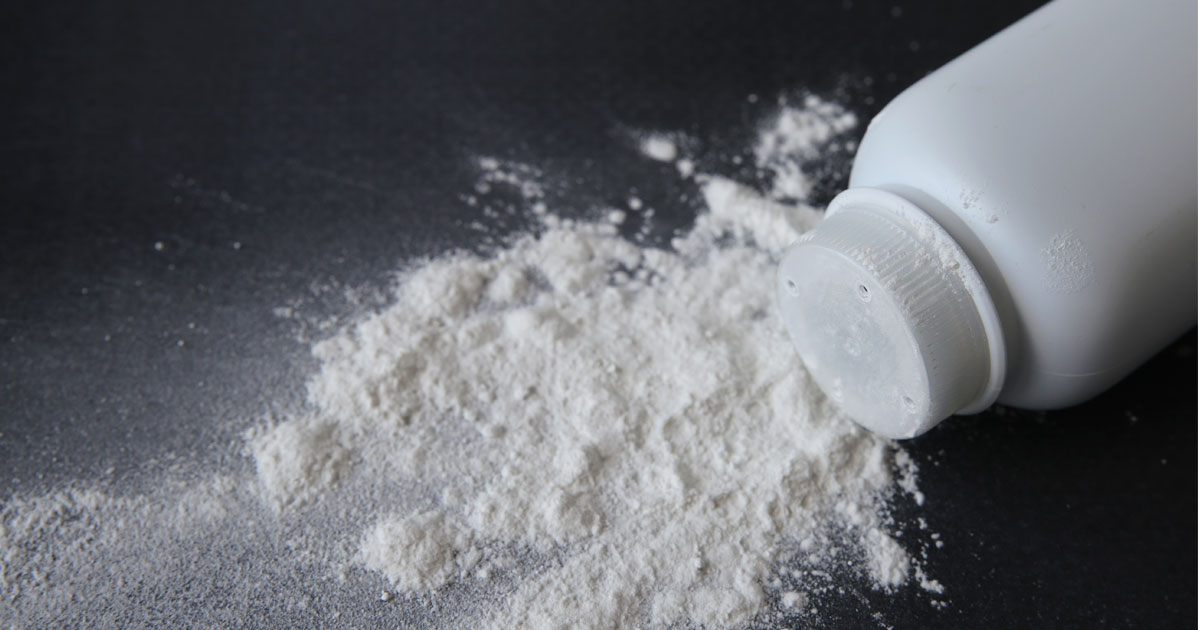
Talc is a popular ingredient in many types of makeup, including children’s play makeup and powders. Talcum powder is produced from the mineral talc, which contains magnesium, silicon, and oxygen. This mineral helps reduce moisture and prevent chaffing, which has made it a common ingredient in a variety of healthcare and beauty products.
Pure talc is not dangerous. However, because talc and asbestos are often found close together in nature, mined talc may have traces of asbestos. According to the American Cancer Society, exposure to asbestos in any form can create a severe health hazard and increase the risk of tumorous growths. There is no safe level of asbestos exposure.
Asbestos was widely used in building products and other materials from the late 1800s through the 1980s because of its heat and fire resistance. When asbestos is disturbed, it gives off invisible fibers. Unsuspecting people quickly inhale these fibers, which penetrate deep into lung tissue.
Over prolonged exposure, mesothelioma cancer can occur. Mesothelioma cancer is found mainly on the lung and other chest surfaces in small, individual tumors that eventually grow larger and together. Mesothelioma can be diagnosed up to 40 years after exposure.
While asbestos is no longer allowed to be used in products, traces of it can still be found in talc products due to the minerals’ proximity while being mined. Contaminated talc products pose a serious health risk to consumers, including cancer.
A few tests in the past five years tell the story:
The problem appears to be fairly significant in the makeup industry. Some manufacturers stopped using talc in some of their products, but not all. Other brands do not use talc or have asbestos in their products.
Asbestos is regulated at federal, state, and local levels. Talc is not regulated by any government agency. The cosmetic industry regulates its use of talc and claims that it attempts to source asbestos-free talc. It has failed to prevent asbestos from entering consumer products.
Manufacturers often add talc to makeup because it is the softest mineral on Earth. It helps create a soft and silky product and absorbs moisture. It can also act as a filler. Talc is a common ingredient in:
Talc is also added to many consumer products, including deodorants, powders, soap, feminine hygiene products, contraception devices, pills, textiles, chalk, children’s balloons, clay, and crayons.
Asbestos can end up in makeup due to poor regulations of cosmetic-grade talc, also known as talcum powder. Talc and asbestos are both minerals. They form together, and as a result, talc mined for commercial uses can be contaminated with asbestos.
Unfortunately, talc that is certified asbestos-free can still have traces of asbestos. Manufacturers do not purposely add asbestos to cosmetics. However, that lack of regulations around cosmetic-grade talc means that no entity is checking for the presence of asbestos. Companies can avoid testing their talc for asbestos before putting it in their products, possibly harming consumers.
The FDA does not regulate cosmetic-grade talc. In 1976, the Personal Care Products Council asked its members to use asbestos-free talc in their products. Although the FDA says cosmetic talc should not be contaminated with asbestos, no U.S. laws or regulations strictly prohibit talc use in consumer products from containing asbestos.
Many retailers sell children’s play makeup or toys that contain talcum powder. Asbestos in children’s makeup was found in 2019 by the FDA. The first reports of asbestos in children’s makeup were released in 2017. In 2015, asbestos was detected in children’s toys, including crayons and a toy fingerprint kit. Most retailers have not announced plans to discontinue sales of all talc-based makeup products.
Long-term exposure to asbestos through talcum powder is known to cause mesothelioma and uterine and ovarian cancers. Asbestos-contaminated makeup has not been associated with disease but is still a risk.
The most significant risk comes from loose powder products, such as baby powder, finishing powder, and compact foundation. They can be inhaled and lead to lung cancer or mesothelioma if asbestos is present. The health consequences of asbestos exposure take decades to develop, so consumers and medical professionals may not always suspect the connection between makeup use and disease.
Talc is an all-natural substance, so there is no foolproof way to know if the talc is truly asbestos-free without extensive testing of each product. Consumers should read the labels and avoid products that contain talc.
The American Academy of Pediatrics advises against using baby powder, which is predominately made of talc, because infants can easily breathe in the powder. Parents can protect their children from asbestos in makeup and play kits by buying only cosmetics free of talc.
U.S. consumers should protect themselves because the government does not strictly regulate asbestos as it relates to talc. Every consumer should:
The only way to know if the makeup or cosmetics you own contain asbestos is to have each product tested in a laboratory. If you own makeup that contains talc, it is much cheaper and quicker to replace it with a talc-free brand than have it tested for asbestos. You can also check for product updates at asbestos.com and asbestos123.com and in news stories.
Exposure to talc or other products containing asbestos can cause mesothelioma, lung cancer, and uterine or ovarian cancer in women. If you believe there is a link between these substances and your illness, contact one of our Philadelphia mesothelioma attorneys at Brookman, Rosenberg, Brown & Sandler. Call us at 215-569-4000 or contact us online to schedule a free consultation. Located in Philadelphia, we serve clients throughout New Jersey and Pennsylvania, including Delaware County, Chester County, and Philadelphia County.